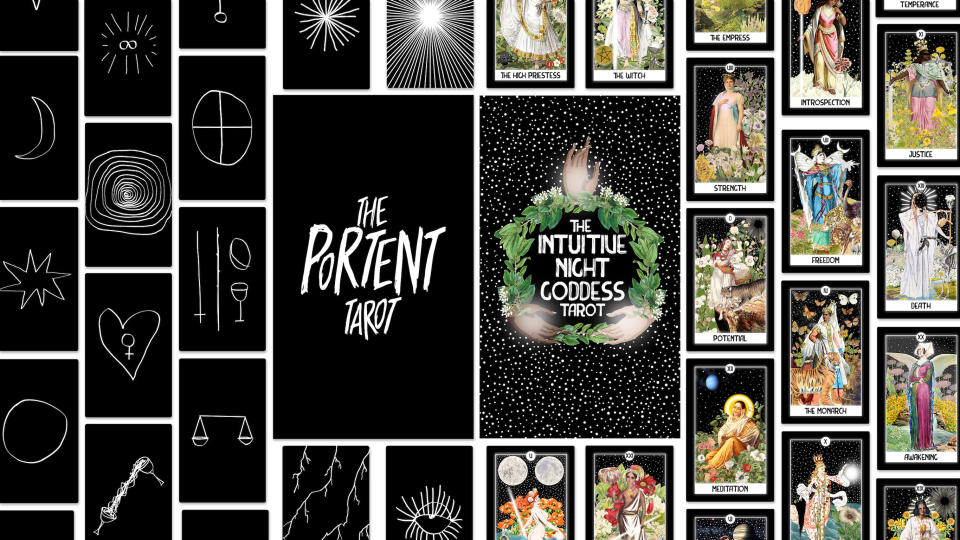14 Things Everyone Should Know About Tarot Cards, From A Tarot Card Designer
Tarot cards have been around forever! I'm talking at least since the 15th century – according to MODA. But some people still need clarity on how to use the cards or what they mean. So when I got the chance to discuss Tarot decks with expert and card designer Linzi Silverman, I couldn't pass it up.

Linzi has designed and published the Intuitive Night Goddess deck as well as the Portent Tarot deck. She's even recommended books to read inspired by certain cards, specifically for BuzzFeed readers! And she's back to answer questions asked by our BuzzFeed community on whatever they wanted to know about these mystical tarot cards.
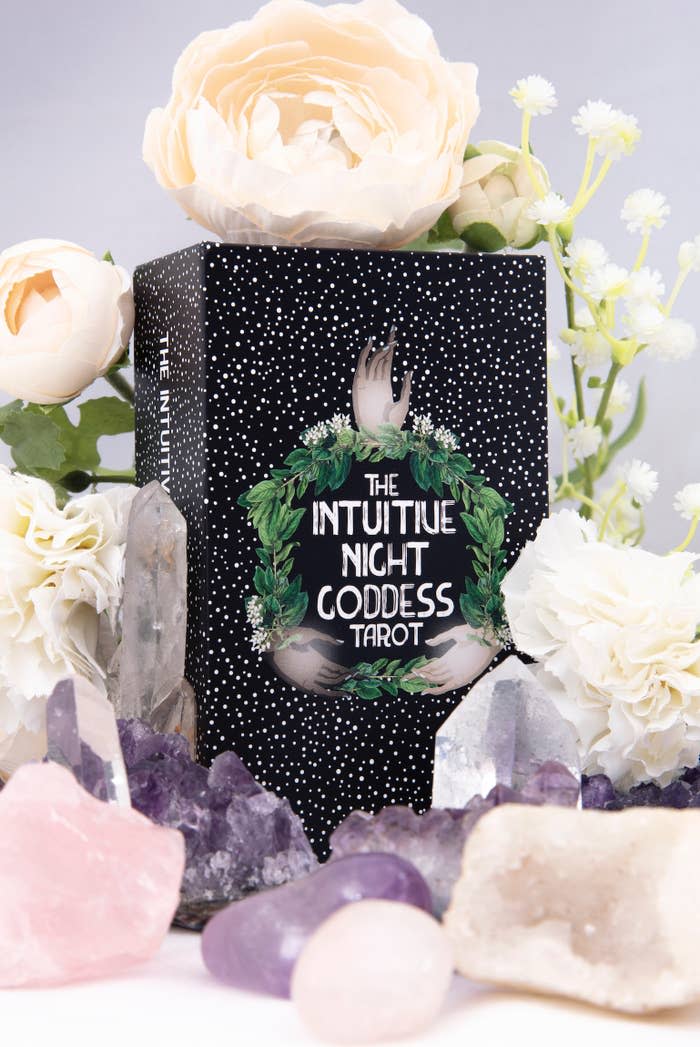
1."How exactly do tarot cards work?" —flirtyfrog
LS: Tarot cards typically work by clearing the cards' energy, shuffling them, and pulling one or multiple cards, known as a spread, to gain understanding and insight on a situation, relationship, or feeling. Inherently they are pieces of paper, but with our intention, they act as a point of focus for our intuition to help us navigate our lives with a deeper sense of purpose as well as finding healing along the way.
2."Is it true that someone needs to gift you your first tarot deck as opposed to purchasing it yourself?" —sweetbref
LS: This is a common fallacy within the tarot community. You can and should buy your own deck, especially if you are feeling called to one. I believe the tradition, or at least the myth of the tradition, started as a way for people to gatekeep magic and magical tools. If this is true, the people who hold access would only invite who they want, and that’s not how magic works. We are all born into magic; we each already have a connection — it is simply about remembering and strengthening it. Our magic is our own; no one can dictate it to us. Therefore, the magical tools you connect with will be unique to you. Trust your intuition, that internal sense, to see what draws you in. If a deck is calling your name, invite it in; no need to wait for someone to gift it to you. Magic is all about claiming your personal power, and the tarot is an excellent tool to amplify those abilities.
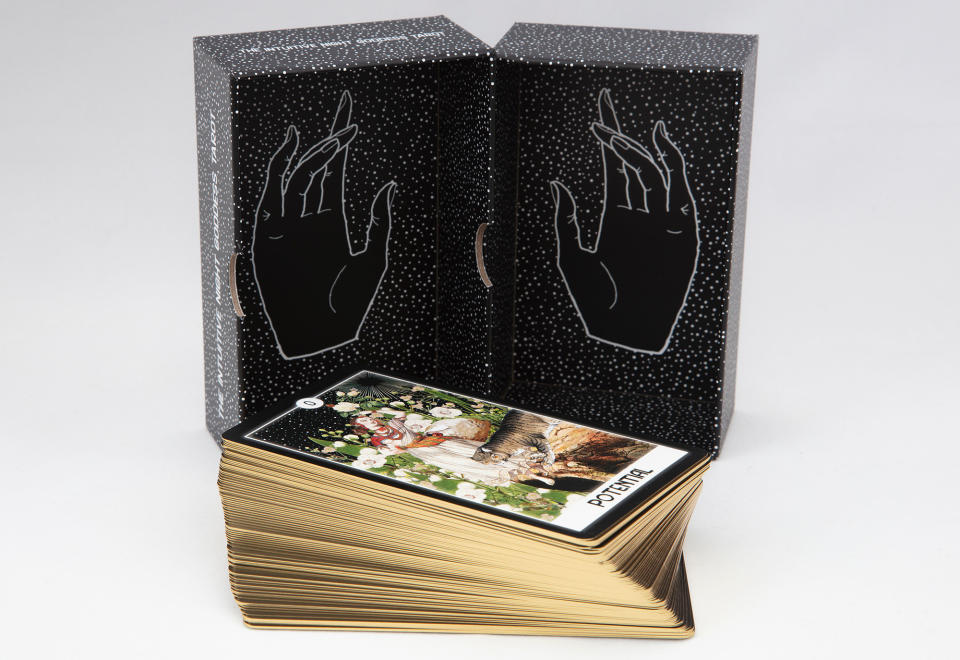
3."Do you ask the cards ‘yes’ or ’no’ questions only?" —Anonymous
LS: It is actually best to not ask ‘yes’ or ‘no’ questions. I find tarot to be limiting if we are looking for certain answers. We may try to connect the card to what we want if we are looking for something specific. Life isn’t always so black and white; we must be open to possibility. I recommend asking wider questions and seeing what the cards offer you. So instead of “Will this choice make me happy?” maybe ask, “What kind of happiness will this choice bring me?” The answer will have a richness and depth that a simple yes or no cannot provide.
4."Is the death card a bad omen?" —Anonymous
LS: Never! I love the death card, but I know it scares many. The death card represents endings, which means the space for beginnings. Very rarely does the death card represent a literal death, but more often that metaphorical one: a move, a relationship ending, leaving a job. Even the death of a version of yourself can lead to an evolution, a rebirth. When the death card arrives, it’s time for us to acknowledge there is nowhere else for this thing to go, to make our peace with an inevitable, and to be open to the unknown. When we face fear, we find strength.
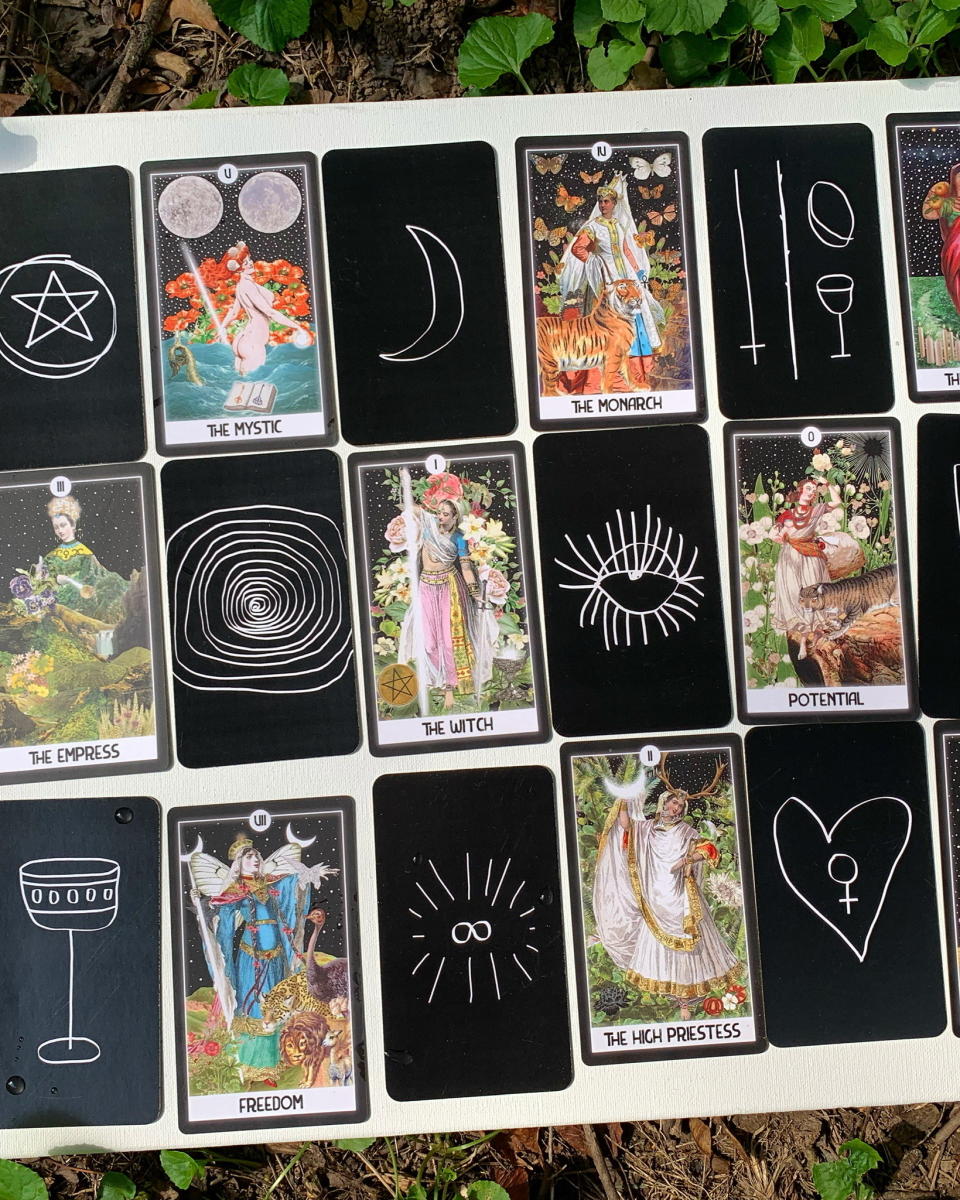
5."I’m new to tarot and wonder about reversed cards. Some readers say it means the opposite of the upright cards, and others say it means the same, but to a lesser degree." —gailwhite
LS: This is a common question new readers have to tarot, so you are not alone. Reversals can be confusing as readers will interpret them in different ways. While there are some that read them as opposite or lesser of the same thing, I find that to be a limiting way to read the cards. When I get reversals in readings, I look at the context they play in the spread. I will look at which direction figures are facing, which elements suddenly have more importance (on top) over other symbols. Often a reversal to me will mean that energy of that card but ungrounded, or I am not looking at the situation clearly. Especially if a lot of the cards in a reading are reversed, I will tell the client that they think they know what’s going on, but to approach things from a new perspective. Maybe certain energies of cards are now interacting more with one another when reversed. In general, I find memorizing meanings to be limiting when working intuitively with the cards. Your best bet to get the most authentic reading is to look at what the card is telling you regardless if it is facing one direction or another.
6."I've heard you’re supposed to let the person you're reading find the meaning in the definition of the card, but I've also been told the reader of the cards is supposed to do that. Which is true, or are there multiple ways to read?" —lesbollamaslemons
LS: It’s both true and part of what I love about tarot and reading with others. As the reader, I think of myself more as a space holder, a guide/channel for the querent, the person having their cards read. I release my ego as the reader. I am not there to regurgitate what can be read in a book, but to offer insights as they arise. The only way the reading works is if the querent is open and welcomes in the wisdom. When reading for someone, they have their own lexicon of symbols that they work with in their life, whether they recognize it or not. As the reader, I have experience and learned knowledge to offer insight, but the messages are meant for that person, and if they are seeing or receiving certain downloads, I encourage them to share and trust them, as the reading is meant for them. They know themselves best. This can also be helpful with new readers if you want to do a cold read (not knowing much insight) on a spread and then get their interpretation to see if it aligns with what you were receiving.

7."Is there a time that you should not use your tarot cards? I always turn to them in negative times, but I’m always afraid of transferring poor energy to them. Is this a factor?" —madal03
LS: Nope. I don’t believe there are any rules in magic. When we feel called to the tools is the time we are meant to use them; that is when they are there for us. I don’t believe the tarot judges us or absorbs the energy of the readings when we come to them. It knows it’s there for our support. It wants to help guide you through darkness. If you start to worry about the energy your deck is carrying, you can always cleanse its energy. Typically I will put my deck in my left hand (receiving energy) and knock on it three times with my right (releasing energy) to clear the deck for a new reading. You can also bathe it in moonlight, with smoke, flowers, crystals, or whatever else is calling to you if you think there is an imbalance and block with the cards. But no bad times to use it, maybe just a bit more maintenance.
8."Should I be creating a special space or doing anything before reading the cards and after?" —Anonymous
LS: Only if you want to! Once again, there are no rules for magic. It’s all about what resonates for you. If you want to create a sacred space and ritual, you totally should. I always want to create a special altar for readings, but that’s not often the space I am in. I prefer my bed or wherever I am when I get inspired to read. I believe intention is the biggest tool when it comes to magic, not tradition or specific steps. When you are with your cards, or any tools (even your own hands, hearts, and minds), if you say this is my time to connect to magic/spirit/universe/higher power/whatever, that’s all you need. The rest of it adds to the space you are holding, and so you may want or need that for your environment. Before a reading, I always clear the deck’s energy by putting it in my left hand (receiving energy) and knocking on it three times with my right (releasing energy). That resets any previous readings. Maybe afterward, you like to take a picture or journal on it. Create your own rhythms for what kind of relationship you want to have with the cards.
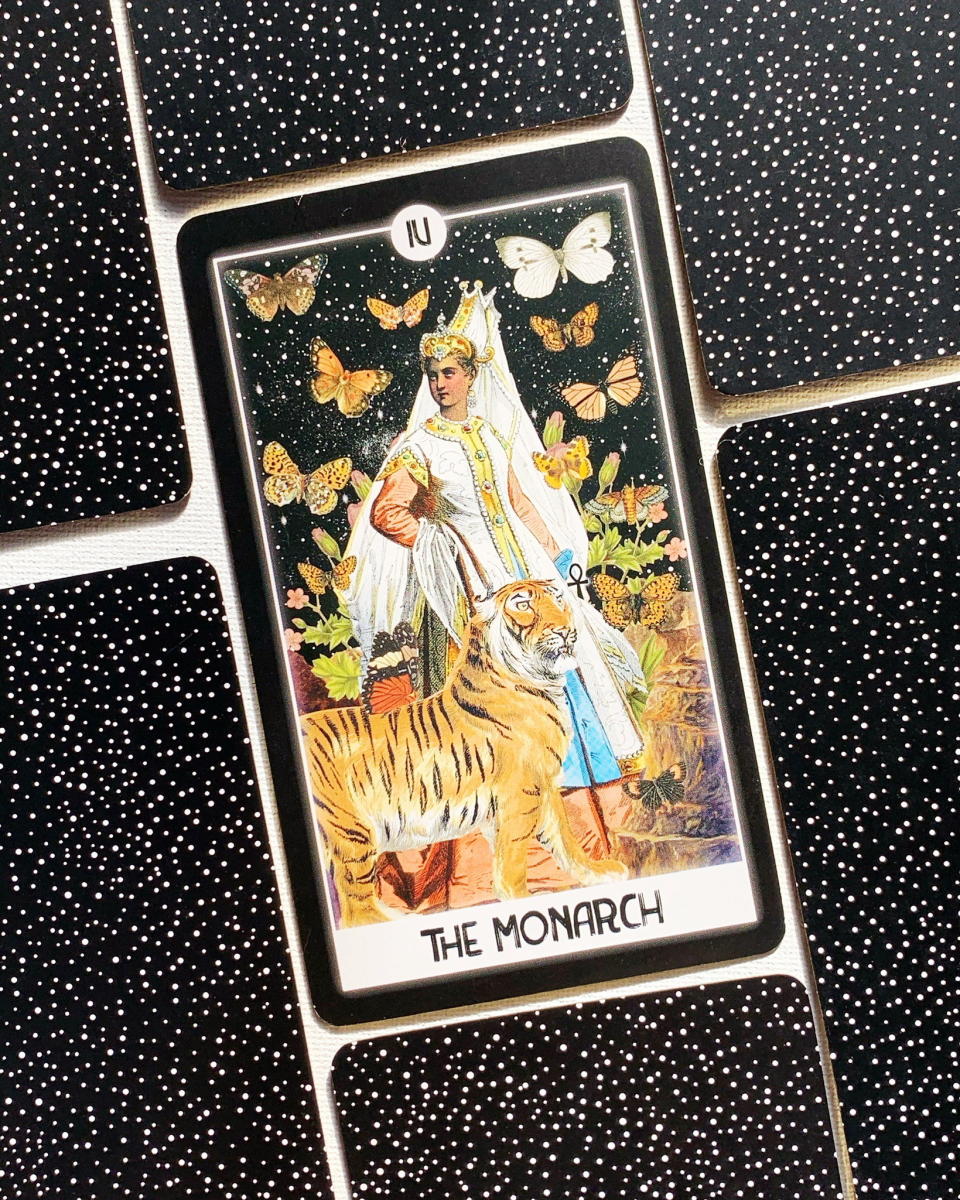
9."Can you explain what the four suits in the Minor Arcana symbolize?" —Anonymous
LS: The four suits of the Minor Arcana are Wands, Cups, Swords, and Pentacles. Each suit is similar to playing cards in that they are Ace through Ten, and then there are four court cards: Page, Knight, Queen, King. Through each suit we move through the journey of tarot, growing and learning through these elements and returning to similar themes.
Wands are the element of fire and have to do with passion, spirituality, ideas, energy.
Cups are the element of water and have to do with emotions, intuition, relationships, and creativity.
Swords are the element of air and have to do with action, communication, action, and release.
Pentacles are the element of earth and have to do with career, financial, home, and family.
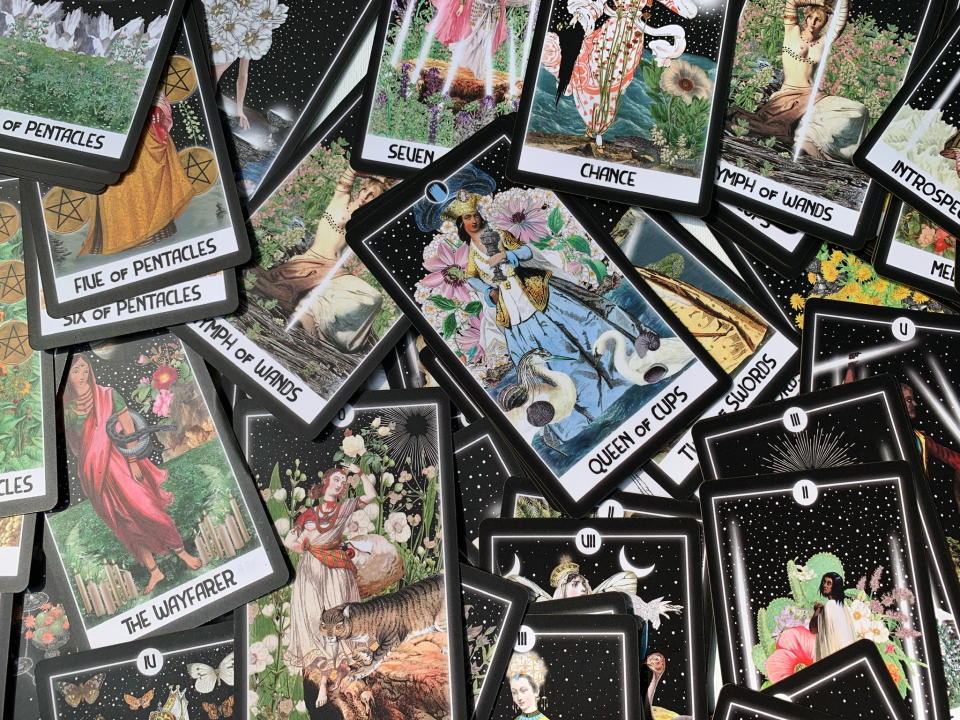
10."What would you say to people who have misconceptions about tarot cards?" —Anonymous
LS: I would ask what they were and listen to where they are coming from. Often people who are apprehensive about tarot don’t know much about it, and that unknown is scary, or they were raised in a religious household and were told they will invite in something bad if they use them. At its base, tarot is just pieces of paper; they only have power when we let them. Tarot doesn’t foresee the future or decide everything for us. Instead it offers a space for introspection, healing, alignment, and action. Tarot can act as a mirror, a guiding post, and the energy we bring to it is the energy we get out. I will never try to convince someone that tarot has power. I will let them know I am available when they feel ready and open to it. Without that internal acceptance or curiosity, the tarot won’t be the right tool for you or that person, and to try to convince them otherwise can be draining and futile.
11.When designing a card, are there some elements or symbols that must be incorporated for consistency across decks? —joandough
LS: That is up to the maker completely. The Rider-Waite-Smith is the most commonly printed and known tarot deck, so a lot of decks are based on its iconography and reference its symbols. That being said, they say when you design your own tarot, you are telling your own life story. And we all have different stories. I think as the designer, it is always important to have some kind of intention, even if it is simply following intuition, that the art will say what it needs to say. I love decks that turn symbols and stories on their head. Everyone will have their own interpretation.
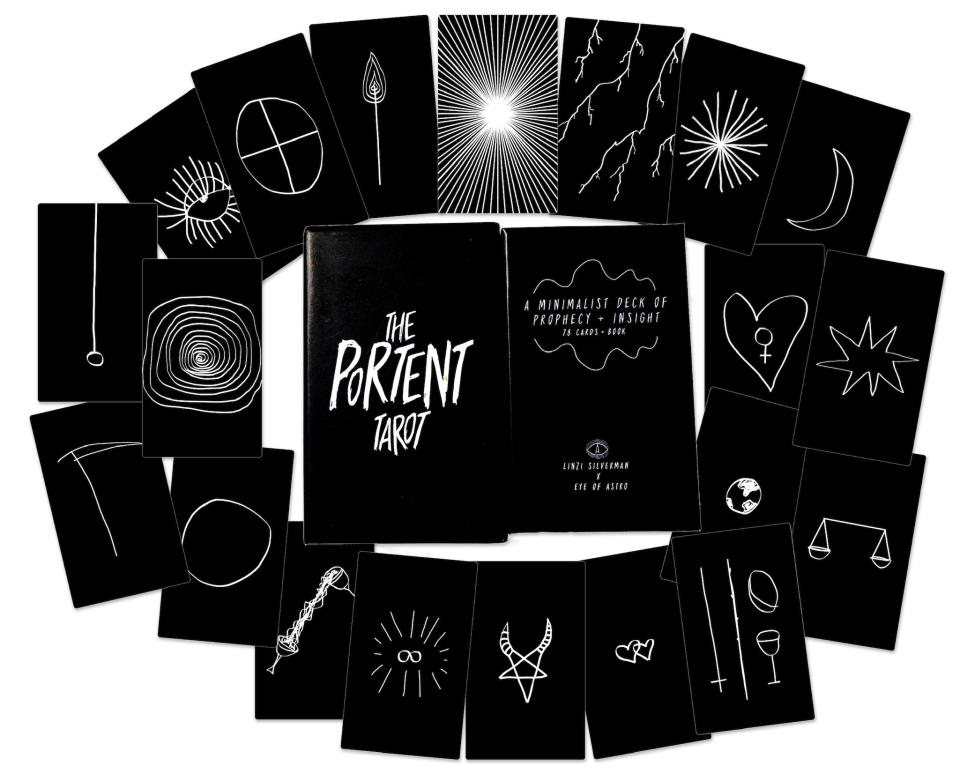
12."I've actually been curious for a while: What's the difference between a tarot deck and oracle decks?" —jessiem486a34b1a
LS: Tarot decks and oracle decks are similar in that they are both divination decks, cards that provide answers and insight. Tarot refers to a specific system of 78 cards consisting of 22 Major Arcana and 54 Minor Arcana. Oracle is an umbrella word for any kind of unique system of cards, meaning there can be any number, and they can be whatever the maker wants.
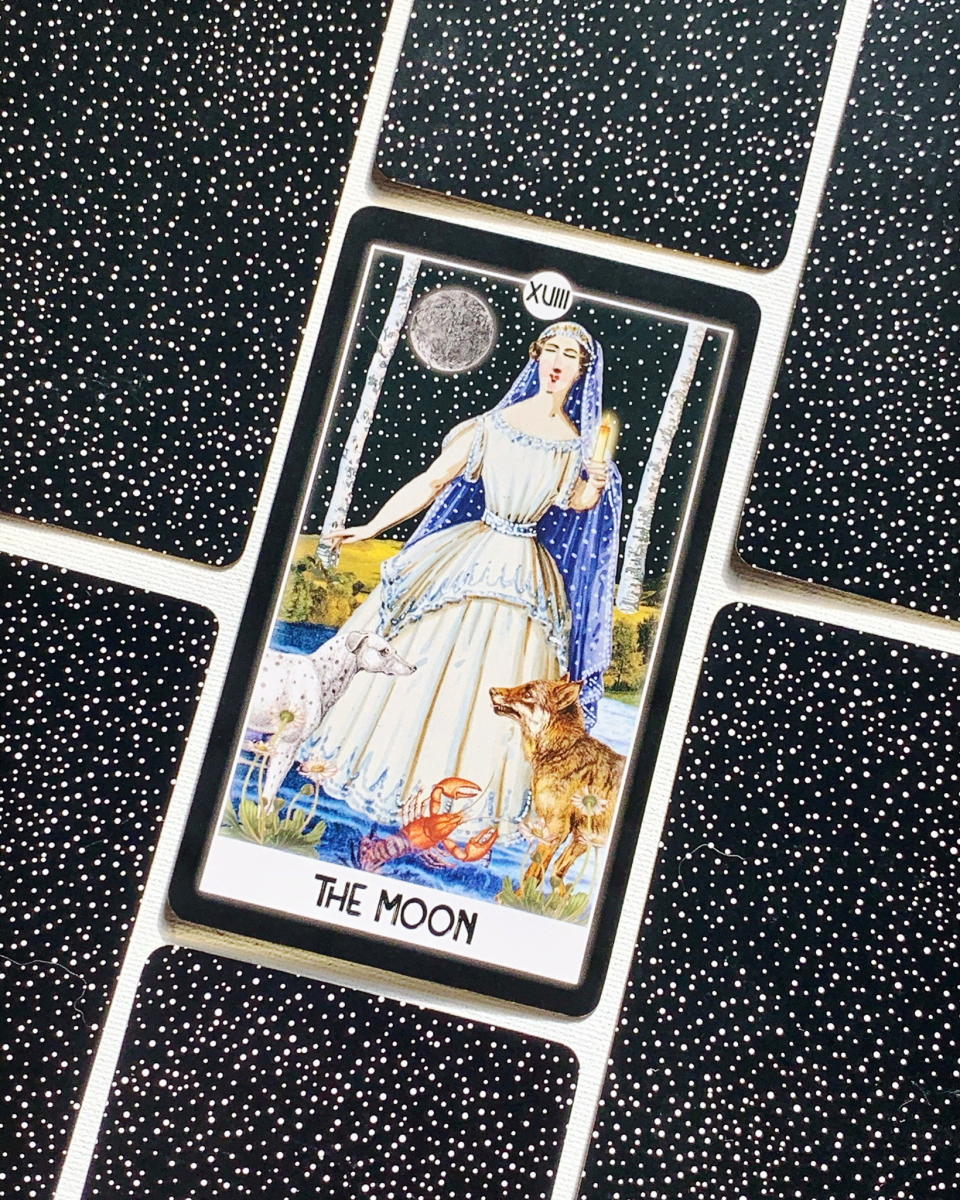
13."What inspires you to create the cards? How do you know which symbols work for each card?" —Anonymous
LS: I love making art and magic. Deck making is the cross section of my passion for creating, design, and spirituality. Spending time alone and in nature, meditating, watching TV, I get downloads of visions of art and the meanings behind it. I let it ruminate until it must come out. My decks are born from my conversations with my intuition and observing and living in both our visible waking world as well as behind the veil to the hidden/magical one. My relationship to energy healing, meditation, body work, and movement all inspire the work that comes through.
As for knowing the symbols, I don’t always. I have an affirmation on my computer “Intuition over Intention,” and for me creating is about trusting that my subconscious and higher self are using me sort of as a puppet to guide me to the best choices. Like suddenly something feels right, so I go with it. When making the tarot, specifically The Intuitive Night Goddess Tarot, there were a lot of specific symbols from the Rider-Waite-Smith that I knew I wanted to include, so that was a bit of a hunt, but once again I listened to my intuition with what to keep and what to make new. With The Portent Tarot, paring down a whole narrative of a card to one symbol was tough. But it felt good to trust I was picking the right one, translating it, something that encompasses many things at once. What’s been cool is my friend who edits my tarot books and has an extensive esoteric and mystical knowledge will comment on choices I make and how they connect to existing magic/philosophy, and a lot of times, I won’t even known that I had done that.
14."What has been your favorite card to design and why?" —Anonymous
LS: Oh wow! How do you pick a favorite?? It’s super tough, but The Ten of Cups may be my favorite because I love how that rainbow came out, and they always remind me of the mermaids from Hook/Peter Pan, and I love/am a mermaid. That card is all about celebrating joy and life and the gifts we have and feeling the abundance the universe offers us.

You can purchase Linzi Silverman's Intuitive Night Goddess Tarot deck on her site or her Etsy shop and stay updated on her other deck releases, like The Portent Tarot, by following her Instagram account.
